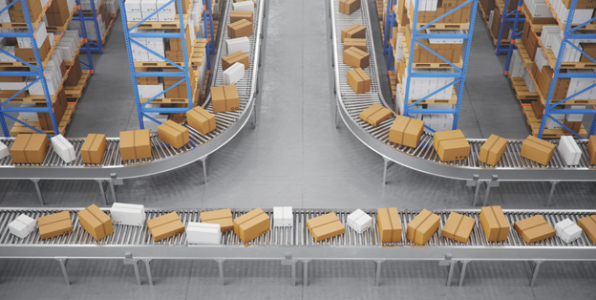Industrial Conveyor Belts and their Applications

Industrial Conveyor Belts and their Applications

You may be thinking that a conveyor belt will help your assembly line more efficiently. Know more about this on this page here. However, with so many choices out there, it’s essential to determine which one will fill your needs in the company.
If you want to make a wiser purchase, it’s important to know the basic types out there and try to match them with your business applications. Know that the suitable kinds of belts can streamline your entire assembly line, increase your production, add to your profit margin, and result in company growth. To begin with, here are some of the basic types that you need to know about.
1. Roller Beds
The surface of the roller beds has the purpose of matching your production. They have specific speeds and weights that can move the products along the assembly line. The shorter ones may consist of two rollers. However, when you need the lengthier ones and as the distance between the two increases, you may need more rollers for the more efficient function of the belt.
Roller bed set-ups are great when you need the products to be loaded with the help of gravity. This is because the mechanical way of loading may damage and cause mechanical shock to the installed rollers. These are great for companies that are transporting most of their products over long distances to reduce friction along the way.
2. Flat Types
The flat varieties are one of the most common systems today. They are available in many conveyor belt suppliers that can provide you with the specifications that you need. Flat belts are very convenient when you’re transferring within your facilities and doing internal conveyance. They are moved by a series of pulleys made from nylon, polyester, or other synthetic fabrics.
The products are placed on top of the flat conveyor belt, and they are carried from one designated place to another. Since these can be made from synthetic fibers or natural materials, they can be versatile. Some of the optional features to know about include the nose bars and center drivers that can help depending on the operation.
Some of the applications for flat types are slow assembly areas, wash-down lines, and other industrial environments. When they are fitted with the right belts, they can transport irregularly shaped products without damages.
3. Modular Varieties

While the flat belts are utilizing continuous and single loops, the modular ones use countless interlocked pieces made up of hard plastics. These segments are often replaced and individually removed, which contrasts with discarding the entire conveyor belt when you want to replace one part.
They can be easier to clean, are resistant to abrasive and sharp materials, and have easy maintenance. You can also repair them quickly if they get damaged.
The conveyors for modular types are very good for applications like traveling on corners. They can be used to go around the corner of the room, on inclines, declines, and straight lines while simultaneously utilizing the same motor.
Technically, this feat can also be possible with other types. However, they can be achieved after spending a lot on too many customizations. The modular plastic belts allow owners to have the design that they wanted without compromising the tracking of everything. An example is using a modular belt for more support in cardboard boxes, soft plastic boxes, and shrink-wrapped goods.
These are common in many food industries because they can be cleaned easily. Know more about the roles of conveyor belts in the food industry on this site here: http://locker.com.au/blog/general-industrial/conveyor-belts-and-their-role-in-the-food-industry/. The spacing of the segments is possible so they can achieve more adjustments. The plastic composition makes it easier for manufacturers to detect metal if it’s present in the items.
4. Cleated Types
Cleated have vertical barriers in their overall forms. The cleats secure some of the loose products they are transporting, making them a barrier to declines and inclines. There’s consistent spacing in the overall transportation and between the items. Some of the different shapes that you can encounter with cleats include the following:
Forward-Leaning Capital L. This has a broad base that is resistant to leverage forces. Some of the shapes have curved designs that enable them to scoop the suitable granules. This is the type that can carry medium or lightweight bulk materials up the steep inclines.
Inverted Capital T. This type has a perpendicular design and surface. It provides flexibility and support in handling delicate items. This is suited to the transportation of small parts, light-duty jobs, food products, and packaged items.
Inverted V. The inverted V cleats are usually about two inches in height, allowing the troughing results. They are great in transporting materials that are heavy, abrasive, and large because they can withstand heavier impacts.
Pegs and Lugs. These are the kinds that can be used for the accommodation of the specific needs of the company. They are used for the transportation of washed fruits, promote run-offs of liquids, and more. They are considered cost-efficient by many manufacturers because they don’t need to be supported throughout the conveyor belt width. Some are positioned so that they can move the products selectively when they exceed a given size.
Some of the offshoots to know about are elevator belts. They are designed specifically for scoops or spaced partitions where the designs are used to carry loose materials on steeper inclines.
Comments are closed